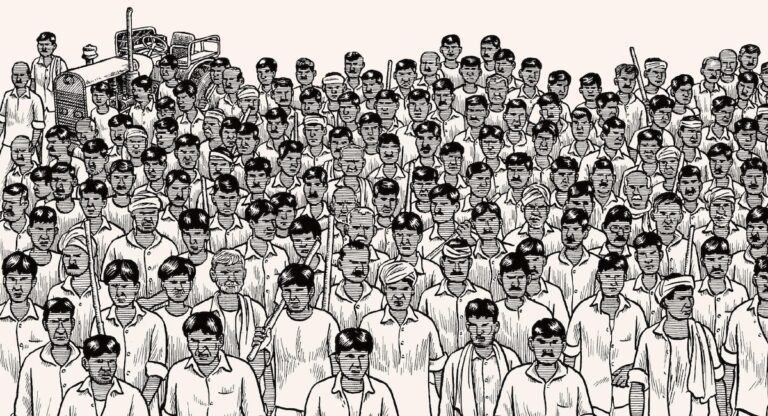Past and future riots
Author: Joe Sacco
Publisher: Metropolitan Books
Publication date: October 14, 2025
The Powerhouse Joe Sacco’s latest investigative reporting project, “The Riots of the Past and the Future,” published by Metropolitan Books, is one of those rare books that leaves you feeling like you might have come out of this experience a better, more enlightened person. This book examines the layers of tension that slowly rose in India’s Uttar Pradesh state and culminated in 2013’s explosive violence between two major groups: Hindu Jatists and Muslims.
An outsider to this culture, Sacco is the perfect detective to guide the other outsiders through the structures of insurrection and persistent division, uncovering parallels to the political machinations and thorny relationships occurring elsewhere. He methodically explains the region’s background without assuming that the reader knows anything, and is credited with introducing the diverse factors at play, including political forces that seem to push religious groups away from each other to their own advantage, class disparities that are not universal, and communities with vastly different beliefs.
We found that some Muslims in the region are very poor and work as laborers for the wealthier Jat tribes, while some Muslims in other regions do not occupy that role and receive seemingly preferential treatment from political forces to further their electoral objectives. At first, the community appears to live in relative harmony, but over time, resentment from political gamesmanship, class warfare, misinformation (and in some cases active disinformation), favoritism, and other tensions builds up, creating a powder keg environment waiting to explode.
Sacco is cautious, but not without perspective. He sniffs out falsehoods when they surface and looks for hard evidence to verify stories and claims. He is not only a detective, but also an archaeologist of sorts, who came to the area more than a year after the incident and unearthed this story. He competently questions and evaluates key witnesses on various aspects of upcoming cases. These events include things like violent riots and subsequent murders, house burnings, and long-term community separations, with tragic consequences for some.
We look at the stories of numerous storytellers and follow his journey as he tries to piece together what really happened. It’s really interesting to watch Sacco discover the information, follow the investigative process as he unravels the tangles, and witness the misinformation and false beliefs flying around on both sides of the conflict.
Once and Future Riots focuses on various elements of the conflict, including how women become pawns in political narratives and are used to fan the flames of anger, how police can be both allies and enemies to different people, how governments selectively help some (particularly those willing to bribe) and ignore others, and how neighbors under the spell of faith turn on neighbors. Very often, the victims appear to be hapless bystanders who happen to share the same sect as those who are being blamed for the crime.
We also see how journalists are participants in the society they observe. Sacco shows how Indian journalists sometimes find themselves caught up in the maelstrom or become victims themselves. He shows himself to be human and limited in his attempts to find more witnesses to confirm or disprove a story, to break the proverbial bread with his sources, to conduct interviews in poor conditions and limited time frames while trying to show respect, to present the information he is given while resisting the urge to overstate his ideas of truth. He maintains a high level of integrity by anonymizing some witnesses to protect their safety.
Although the story includes cultural elements such as panchayats and uniquely Indian leadership roles, and the violence is sometimes carried out with swords and fire rather than guns, the terrifying impact of the mob is something most people can relate to. As an American who has seen his own government fanning the flames of similar flames, this feels very familiar and relevant.
It’s truly unimaginable how much time and effort goes into Sacco’s story, both in terms of research and its unique visual nature. His work is always laborious. In an interview with The Nib a few years ago, he shares how he asks questions, listens carefully, and tries to provide context to everything he hears. While in discovery mode, he is open to new threads that surface. To ensure accuracy in the medium of comics, he has researched in visual archives and drafted by subject matter experts. His black and white art style is realistic and expressive. The intricate hatching work was also meticulously done and, based on his notes at the back of the book, is likely still done in ink, making its detail and clean style even more impressive.
Sacco told Comics Journal that this may be his last full-length journalism book, saying he was satisfied with the particular theme and wanted to explore other types of comics. If this is indeed his last book, he has reached the pinnacle of his talent as a journalist.
“Once and Future Riots” is visceral in its visuals. Comic book journalism allows him to better convey what’s at stake, and scenes of violence and assault hit like a gut punch. It’s hard not to imagine the pain of losing a loved one in one senseless moment simply because you were in the wrong place at the wrong time.
The higher-level effect of Sacco’s examination is the impression of deep tragedy, the sense that once political forces have ignited a fire, there is no telling how far the damage will go—an endless flame of misplaced anger, fear, and retaliation that cannot be easily extinguished again. “The Riots of Once and the Riots of the Future” is a compelling study of cycles of violence and well worth your time and attention.
The Once and Future Riot is available now from Metropolitan Books.
Read more great reviews of The Beat!
Something like this:
Like loading…


